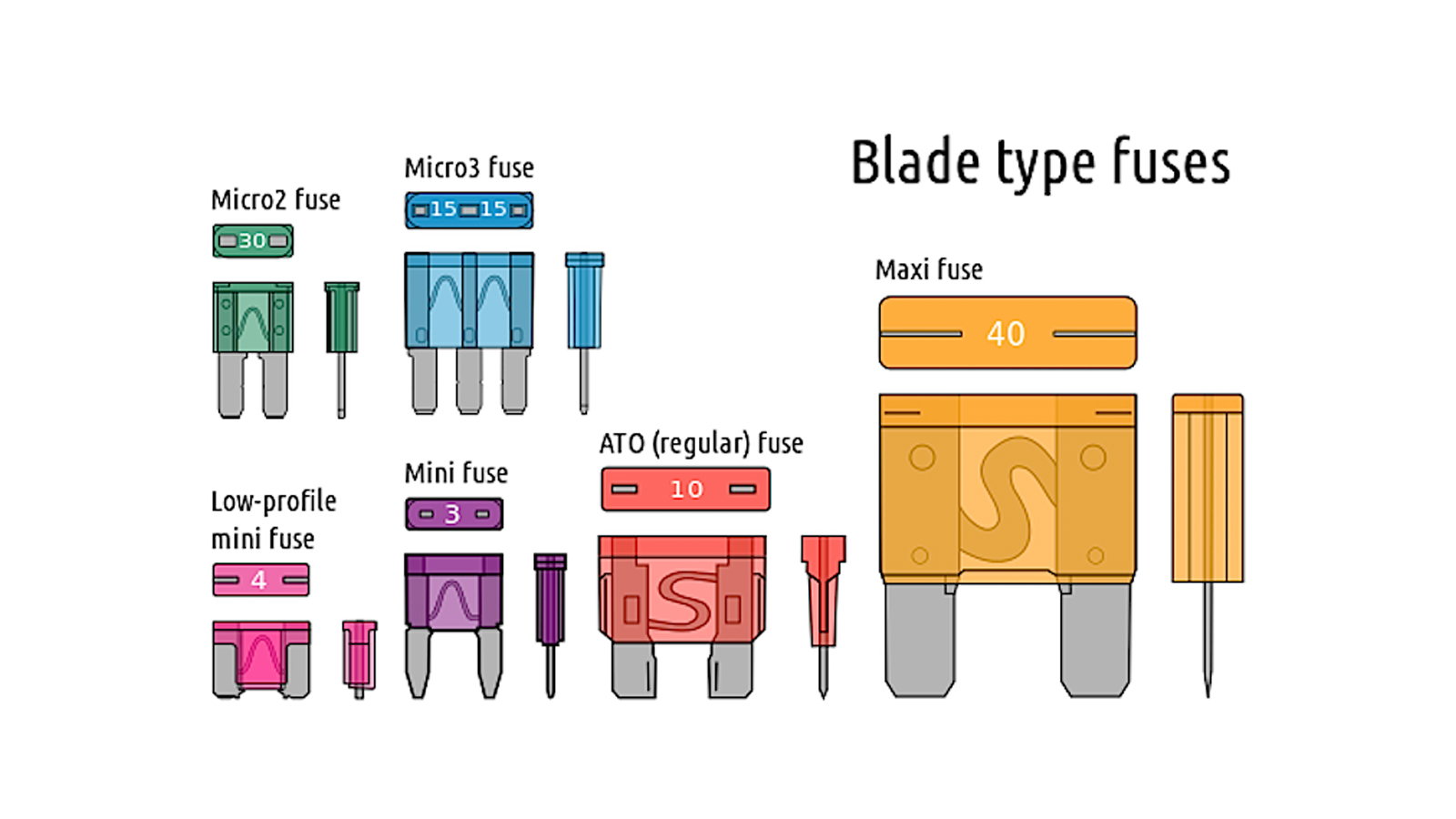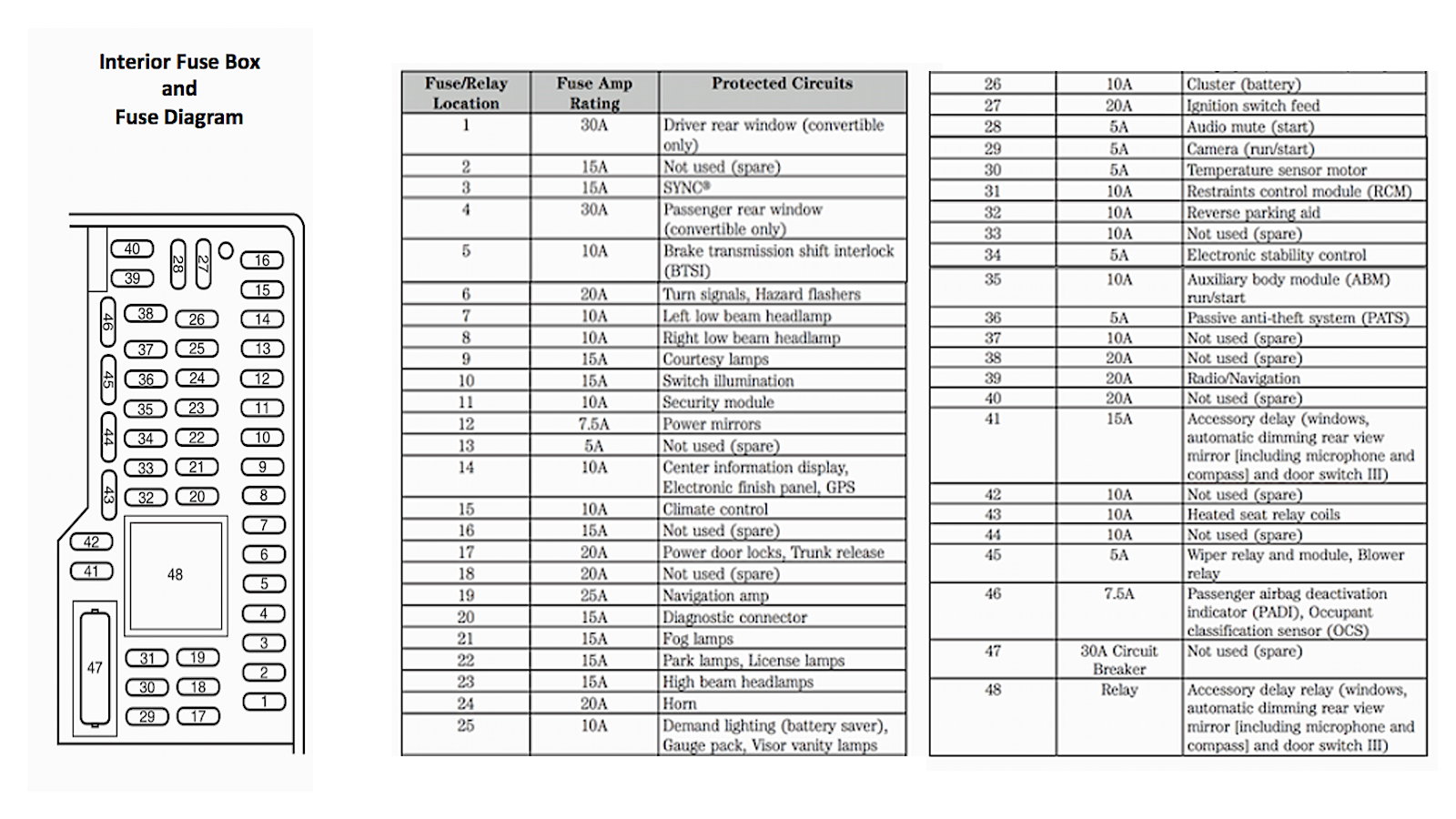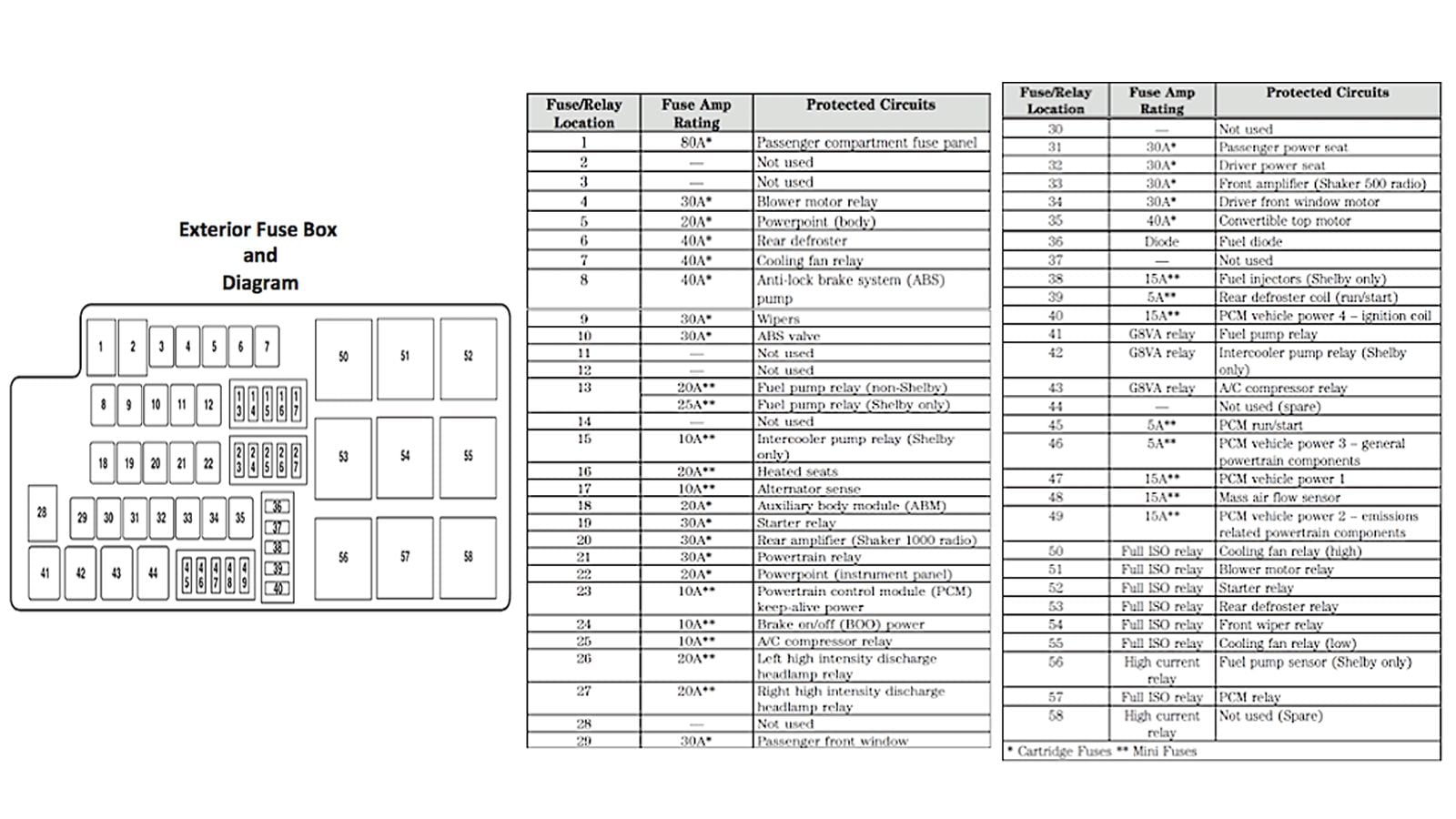Mustang Fuse Box Guide (Fifth Gen)
Slideshow: An electrical component malfunctioning could be caused by a bad fuse. Here's a guide to your Mustang's Fuse Box.




















Introduction
This article applies to the Ford Mustang V6 and Ford Mustang GT (2005-2014).
If an electrical component on your Ford Mustang suddenly stops working, before you start to worry about how much a repair might be, check your fuse box. Fuses are selfless little beings that would rather destroy themselves than allow damage to your car. A fuse costing a couple of dollars can save you thousands of dollars in repairs.
Good Fuse vs. Bad Fuse
A fuse monitors the current passing to different circuits in your car. Basically, it's a piece of solder-like material design to allow current to pass through it, and melt when the power of the current (amperage) exceeds the limit designed into that particular fuse. If there is a power surge in the wire, the fuse will "blow" by not allowing the current to pass through it as the connection has been broken.
>>Join the conversation about the fifth-gen Mustang's fuse box right here in The Mustang Source.
So Many Colors, So Many Choices
Blade-type fuses were designed so you simply have to insert "Tab A" into "Slot B." Because the fuse box has to be limited in size to fit where it does, the fuses also have to be small and easy to remove and replace.
>>Join the conversation about the fifth-gen Mustang's fuse box right here in The Mustang Source.
Various Amperage
Because different electrical components in your car require different amounts of current, fuses come in all sizes of amperage. They can range in size from a 0.5-Amp that could be used on a sound speaker, to a 120-Amp fuse used for the big stuff like alternators and your battery. There are many amperage sizes fuses in between.
>>Join the conversation about the fifth-gen Mustang's fuse box right here in The Mustang Source.
Finding the Mustang's Fuse Box
The Ford Mustang has two fuse boxes. One is located under the hood, and the other is behind the front passenger's kick panel under the dash. This exterior box contains many of the high-amp fuses needed to run the engine. If you are trying to fix a specific problem, your owner's manual will tell you whether the fuse is in the exterior or interior boxes. The exterior fuse box cover lifts off. A fuse location diagram is on the inside of the lid, and also in your owner's manual.
Note
Fuse layouts may vary by model year. Disconnect the battery if you are examining fuses in the exterior box.
>>Join the conversation about the fifth-gen Mustang's fuse box right here in The Mustang Source.
Interior Fuse Box
The interior fuse box is located underneath the dash behind the front seat kick panel wall on the passenger side. The latch is toward the front of the cover. Lift the edge and remove the cover. This exposes the cover of the interior fuse box. Squeeze both sides of this cover to pull it off and expose the fuses.
>>Join the conversation about the fifth-gen Mustang's fuse box right here in The Mustang Source.
Is This A Bad Fuse?
Now that you know where the fuses are located, you can check underneath the appropriate cover or in your owner's manual for the location of the fuse related to the problem that you're having. Before you try to pull the fuse out, it can be checked with a fuse tester, costing usually less than $10 including spare fuses. Too much current will break the connection in the fuse so that electricity will not pass through it. The tester has two probes on its end. These fit into two small indentations in the top of the fuse. If the fuse is still passing current, the light on the tester will glow. If it doesn't, the fuse is bad.
>>Join the conversation about the fifth-gen Mustang's fuse box right here in The Mustang Source.
Examining the Fuse
The next step is to pull the fuse and examine it. Unless you have very skinny fingers or very long fingernails, you'll want to use a fuse puller (often included in the fuse box) or tweezers. This fuse tester pictured below has an integrated puller in its other end.
Note
If replacing the fuse does not repair the problem, you have to check for a short circuit or a wiring problem.
>>Join the conversation about the fifth-gen Mustang's fuse box right here in The Mustang Source.
Your Fuse Box Roadmap: Interior Fuse Box
With dozens of fuses in your car, replacing them in the right spot with the right size fuse can be problematic. That's why Ford supplies you with fuse roadmaps. Diagrams for the positions and sizes of replacements are found on the covers of the respective fuse boxes and in your owner's manual. It is very important that blown fuses are replaced with the same amperage as the new one. Not doing this may cause severe damage.
>>Join the conversation about the fifth-gen Mustang's fuse box right here in The Mustang Source.
Your Fuse Box Roadmap: Exterior Fuse Box
>>Join the conversation about the fifth-gen Mustang's fuse box right here in The Mustang Source.
For help with your maintenance and repair projects, please visit the How-To section of our sister site, Mustang Forums.
